How to Implement Flutter In-App Purchases Using Qonversion
May 10, 2024
Home >> RoR >> Ruby on Rails vs Node js: Which Backend Framework Does Your Product Require?
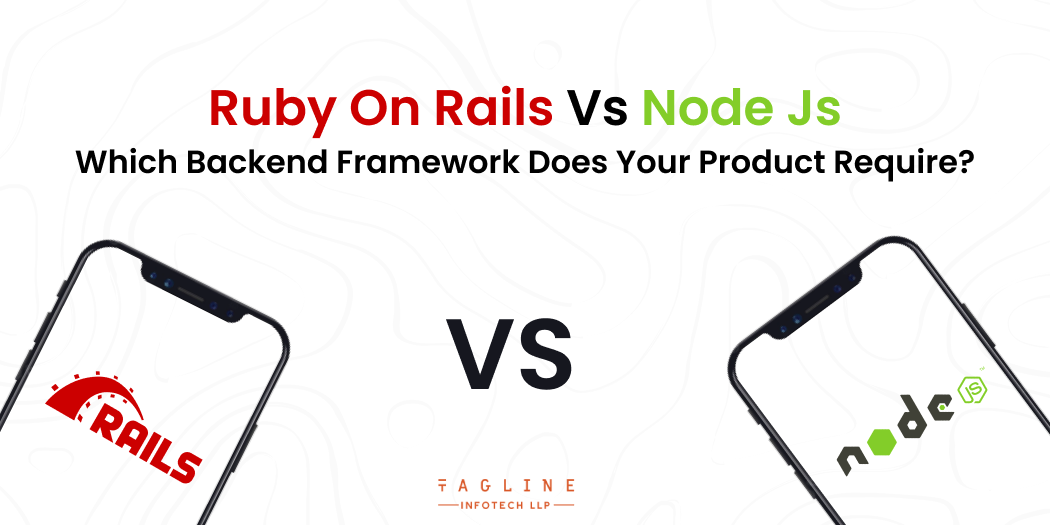
Node.js is a runtime environment, not a language, that enables users to move client-side code to server-side code. Node transforms JavaScript into machine code so that the hardware can quickly process it. The Chrome V8 Engine serves as the framework. The runtime has a high conversion speed because it uses one of the fastest engines available.
A framework for building websites is called Ruby on Rails. In order to handle routine, internal logic, data processing, etc., rails were developed. Ruby on Rails is renowned for its quick processing and effective coding. Ruby only needs 5-10 lines to accomplish what would require dozens in Java. Let’s contrast Node.js vs Ruby on Rails.
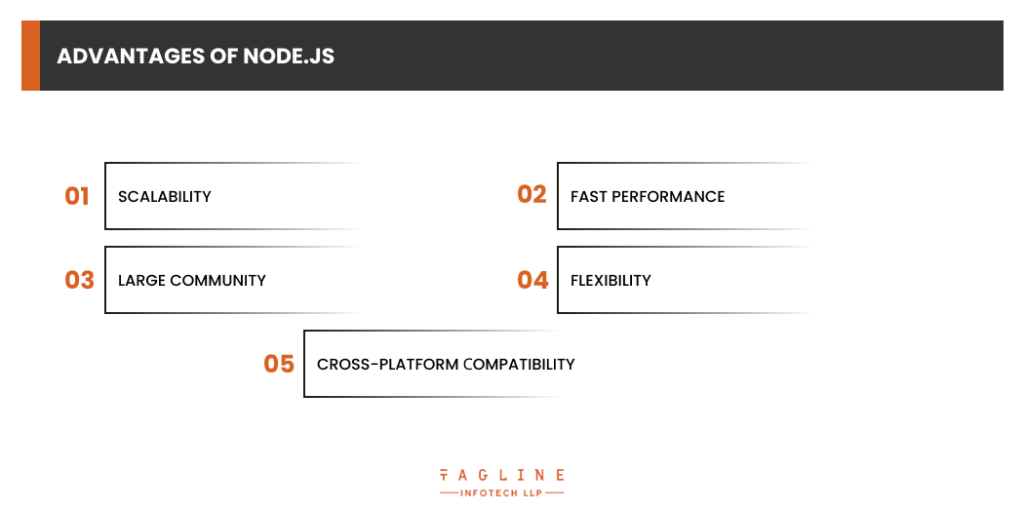
Read on to find out why Node.js has grown in popularity among developers, whether you’re comparing Nodejs with Ruby on Rails for your upcoming web project or just trying to grasp its advantages.
Is Ruby on Rails Scalabler than Node JS?
Speaking of ruby on rails vs nodejs, scaling Rails is entirely feasible. However, compared to the other top backend frameworks, the process requires you to invest the most resources. When Twitter transitioned from Ruby on Rails, hundreds of queries regarding its scalability were made. Due to Ruby’s weak concurrency and inadequate memory management, scaling quickly on the platform can occasionally provide challenges. However, well-known applications like Airbnb and Shopify are enough to demonstrate RoR’s capability and scalability in handling increased traffic.
Every framework has a significant impact on the app’s ability to scale. Therefore, picking the appropriate framework becomes crucial. Without a question, Node.js creates impenetrable and incredibly scalable apps. Non-blocking I/O and the event-driven architecture may handle several concurrent queries. A maximum number of requests can be handled by the server thanks to RoR’s event loop functionality. The best thing is that Node.js breaks down software into tiny pieces, making it extremely compatible with microservices. This makes it simple to divide up duties across many development teams, which speeds up the process of creating apps.
When it comes to the scalability of apps, Node.js beats Ruby on Rails. Compared to utilising Node.js, developers can increase the number of features in the programme because it processes a combination of Node clusters and workers.
Build flexible, secure, and super-fast Web and Mobile Applications. .
Our Dedicated Developers will amaze you with their skills and expertise. Work with our Ruby on Rails Developer and find it yourself!
How does RoR’s performance compare to that of Node js?
When it comes to ruby on rails vs nodejs, it goes without saying that Ruby on Rails is regarded as the fastest or most performant backend framework available. As a trash collection and interpreted tool, RoR’s programmes can occasionally run more slowly. These scenarios are uncommon, though. It only happens when the traffic significantly increases in scale.
Instead, Node.js offers a perfect environment for little (micro-operations) processes that have no bearing on the primary application thread thanks to Javascript’s non-blocking and asynchronous characteristics. It says volumes about nodejs performance. Add-ons: Multitasking is made faster, more effective, and seamless with the V8 JavaScript engine.
How does performance between Node.js and RoR differ?
Node.js handles a lot of requests at once compared to the other backend options. The best thing is that because of Node.js’ outstanding performance, many top software businesses are moving in that direction. LinkedIn downsized from 30 to 3 servers after switching to Node.js, however PayPal’s average response time decreased by 35%, increasing their requests every second. Does that adequately convey the performance of Node.js?
In summary, Ruby on Rails can construct effective web apps by giving a genuine and adequate performance using it in most circumstances, when compared to Node js. All you have to do is follow the development standards, then sit back and observe how easily the rest of the process flows.
A sizable and engaged developer community supports the open-source environment of Node.js. Since there are so many libraries, modules, and tools available for Node.js, building complicated applications can be done more quickly and easily.
The modular design of Node.js enables programmers to write reusable, modular code. As a result, working with other developers and maintaining and updating programmes are made simpler. Additionally, Node.js supports microservices architecture, which enables programmers to create sophisticated applications out of a group of separate, loosely linked, tiny services.
Because Node.js is cross-platform compatible, it may be used with Linux, Windows, and other ossuaries. As a result, it is very adaptable and may be used for cloud-based services like AWS, Microsoft Azure, and Google Cloud, among others, and deployment on a variety of hosting platforms.
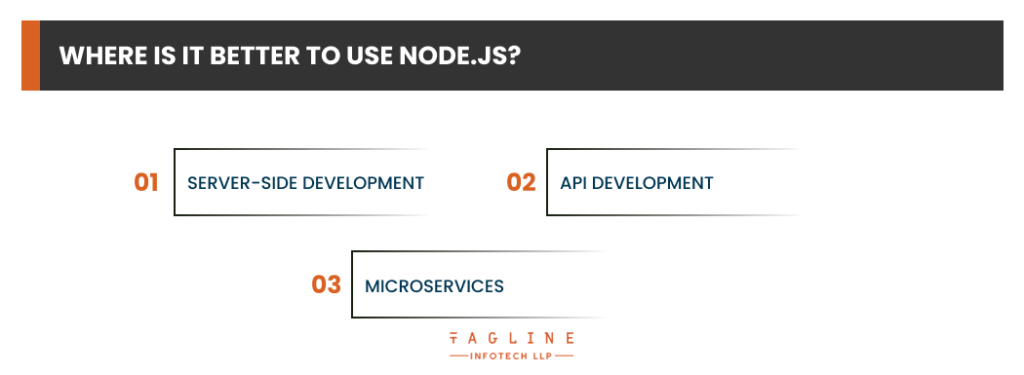
The same JS code you write for the front end may be run in Node.js’ command-line environment. It permits handling several tasks at once and code sharing with the backend and browser. Let’s examine how these benefits can be useful in various web application development contexts.
Node excels at creating dependable connections between the browser and the server. It makes use of a long-polling approach to let applications manage numerous incoming requests at once. Node.js doesn’t hold off on processing completed queries before addressing newly incoming ones.
Because of this, Node.js works well for real-time applications like chat rooms, online games, real-time collaboration platforms, and messengers. The ability to use JavaScript on both the front end and the back end will speed up and simplify development. It won’t be difficult for you to learn Node.js for the backend if you’ve previously worked with JS.
When the debate is about node js vs ruby on rails, the most popular language for creating REST APIs is Node.js. REST is an acronym for Representational State Transfer. It is an architecture that enables consumers to swiftly receive the results of their web queries. The fundamental tenets of REST development are uniformity, statelessness, client-server architecture, layered systems, cacheability, and on-demand response.
The use of REST APIs in web development is quite beneficial. A web app uses REST API to return source results whenever a user performs a search. REST APIs open a line of communication between the user’s input and the software code. Node.js is an obvious first choice for REST API development due to its quick request processing speed and JS tech stack.
Speaking of node js vs ruby on rails,the architecture of Node.js is ideal for the organisation of microservices. We can link several services and handle hundreds of internal requests at once thanks to its non-blocking request-processing algorithms and event-driven methodology. Because microservices must constantly communicate, it is crucial to guarantee quick data processing.
Node.js and microservice architecture both put a premium on speed and effectiveness. By decomposing functionality into manageable services, a microservice architecture enables developers to create robust and scalable systems. This is made possible by the quick V8 engine and non-blocking processing of Node.js.
Also Read : Ruby Vs Ruby on Rails: What’s the Difference?
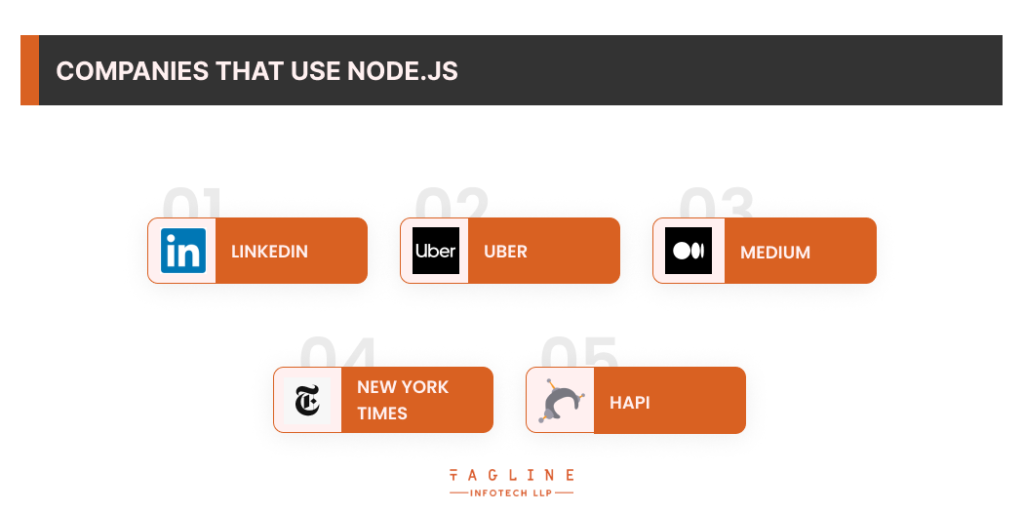
Because of Node.js’ performance and responsiveness, businesses are switching. Currently, Node.js is used by LinkedIn, Uber, Medium, New York Times, and Hapi. Some businesses combine a move to Node.js with a change to the microservice architecture.
For instance, Netflix employed Node.js as the primary backend tool while decentralising its online platform. The app’s scalability and responsiveness increased as a result. The development team at PayPal took a similar action. During prototyping and development, the company employed Node, and the team reports a remarkable improvement in team productivity and app performance speed.
Node.js is not an ideal backend tool by any means. JavaScript is still primarily a front-end technology and hasn’t been modified for all facets of server-side development. It’s not intended to be used for backend functionality. Here’s why Node.js provides a somewhat constrained experience as a result of having to make up for JS’s inability to operate on the server side.
Node.js is a single-thread language, thus unless you construct your requests as a series of events, it will only handle one request at a time. Node.js has a rapid execution speed when it comes to fast operations. Node does not, however, perceive lengthy operations as events when describing them. All further long-term operations will be blocked by a single one.
Such a method causes a significant drop in speed and considerable CPU use. Numerous Node.js benefits are therefore applicable as long as the programme isn’t overloaded with time-consuming operations. Numerous advantages of Node.js are lost if you cross that threshold.
When comparing nodejs vs ruby on rail, the latter is renowned for its extensive ecosystem and open-source package management system, which give developers access to reusable code, plugins, and add-ons and increase the application’s adaptability.
Using ready components, which Node.js is plenty of, can speed up development and possibly enhance the quality of the code. But not all teams are aware of the risks posed by npm packages. The issue is that the Node.js team has just lately started checking modules for security flaws. Several of the current npm packages, including tough-cookie, js.dom, and others, contain dependencies, security flaws, and other areas where security risks could exist.
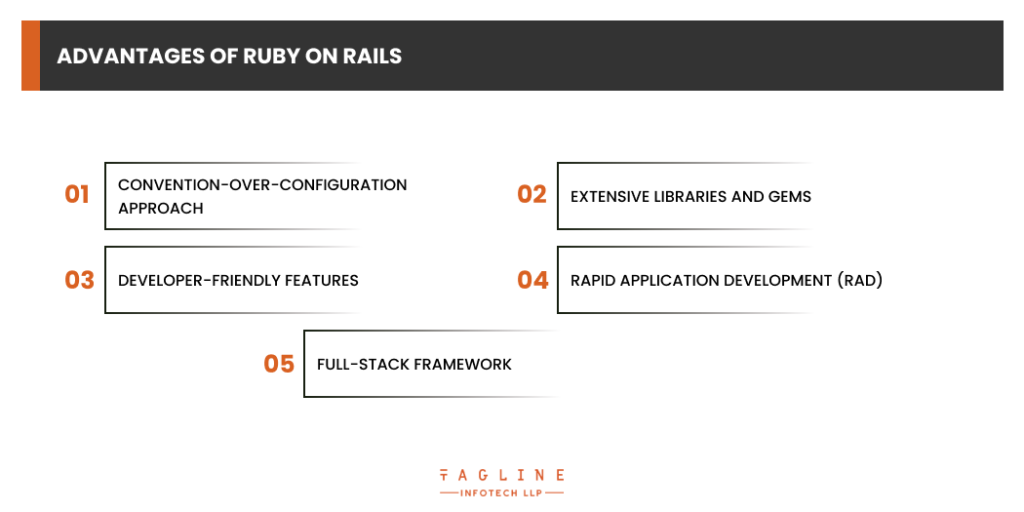
In contrast to Node.js, which is well-known for its scalable and fast JavaScript runtime, Ruby on Rails is a well-established web framework that has been extensively used to create web applications. The benefits of utilising Ruby on Rails for server-side development, such as its convention-over-configuration methodology, large libraries, and developer-friendly features, will be discussed in this section.
If you have a new-sprung idea for your next-gen business, Ruby on Rails will be the right modern programming language to mold your vision into a reality.
Hire the best Ruby on Rails Development Company now and know why it is good to go.
Let’s quickly decide between Ruby on Rails and Node JS.
Developers do not have to spend a lot of time specifying files and directories since Ruby on Rails adheres to the notion of convention over configuration. In comparison to Node vs. Rails, Rails has conventions that make the development process simpler, faster, and more effective.
Ruby’s package management, gems, has a robust ecosystem of libraries that may be readily incorporated into Rails applications. By utilising pre-existing code and solutions, developers may construct complicated features more quickly and with less effort.
Ruby on Rails offers a clear and elegant syntax that makes the code simple to read and write thanks to its extensive expertise in the creation of Ruby versus Node js. Additionally, Rails has built-in functionality for typical activities like testing, routing, and authentication, which expedites development and encourages best practises.
The rapid application development (RAD) features of Ruby on Rails are well renowned for enabling programmers to create apps fast and effectively. Models, views, and controllers may easily be created with little effort thanks to the scaffolding functionality in Rails, which creates boilerplate code.
Ruby on Rails is a full-stack web framework that includes everything required to create a web application’s front end and back end. This reduces the need for different tools or libraries by making it simple to construct end-to-end web applications with only one framework.
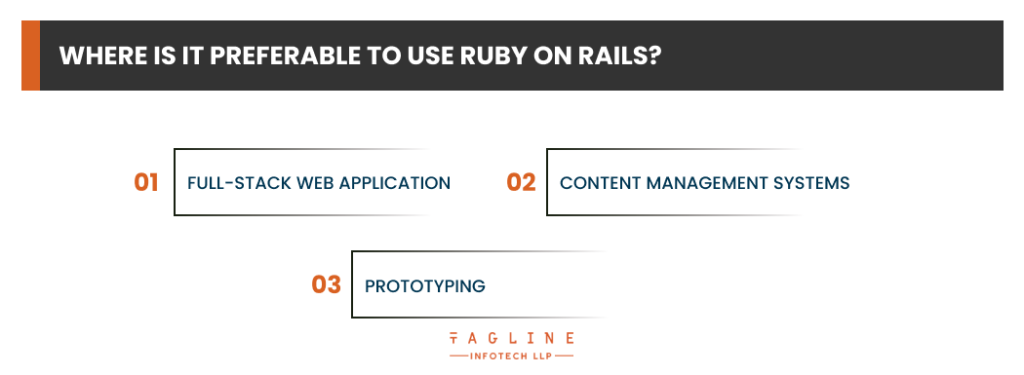
Web applications use the Ruby on Rails backend framework. It is well renowned for its scalability and efficiency. Rich functionality can be created with a much less lines of code than in Java or Node.js.
A highly structured web development framework is Ruby on Rails. There are numerous requirements on how the code must be organised in Rails. The Model, View, Controller framework is used by the framework. You need to specify a view, controller, and route for an app in order for it to respond to a request. Although it takes some effort to get started with an MVC framework, the finished product has well-structured, readable code. In the end, you’ll have effective code that’s simple to update and maintain.
The most popular choice for developing content management systems is still not Ruby on Rails. Though Ruby on Rails has recently entered the market and offers several competitive advantages, PHP is still the preferred option. Due to its high level of abstraction, Ruby on Rails enables the speedy construction of sophisticated functionality. Entire databases and tables can be mapped as distinct objects. A significant portion of functionality can be referred to by several lines of code.
Ruby on Rails enables quick code writing and the implementation of ecosystem-available built-in capabilities. Operational effectiveness and well-organized development methods are more important than perfect speed and interface when working on a product’s least viable version. Ruby on Rails has a number of command-line code generators that save developers from having to start from scratch. This ready-to-use code can support more than half of functionality when combined with open-source libraries.
| Criteria | Ruby on Rails | Nodejs |
|---|---|---|
| Usage | Web Development-Backend | Web Development-Backend |
| Number of Threads | Multiple | Single |
| Pros | Automated garbage collection, Readability, Easy development, Code doesn’t repeat itself | Well suited to microservice development, High performance speed, top choice for REST API Development |
| Cons | No static typing, Memory allocation issues, Slow Speed | Poor performance in CPU intensive tasks, npm Security |
| Use cases | Prototypes, Minimal viable products, CMS Development | Games, Chatrooms, Collab Services (Real time apps) |
To sum up, in the debate of nodejs vs ruby on rails, both backend frameworks have shown to be excellent for various project kinds. While Node.js is the first choice for creating SPAs (Single Page apps) and real-time online apps, Ruby on Rails is the best choice for teams that prioritise development speed (MVP, SaaS development, etc.).
If you are a startup, you must first consider your business strategy before contacting a sector specialist to comprehend and weigh the benefits and drawbacks of both backend frameworks. Ruby on Rails and Node.js are both backend frameworks that can assist you in getting similar results, however when you want to move swiftly, Rails is the best option. Both frameworks have their own unique set of benefits and drawbacks. However, keep in mind that neither the language nor the framework matters. All that matters when creating an application is appropriate execution and knowledge. Hire a Tagline back end developer to create the desired product and go above and beyond your end users’ expectations.
Both languages provide several project types. For teams that prioritise development speed (SaaS development, MVP, etc.), Ruby is ideal. Solutions for Node.js development are frequently used to create single-page and real-time online applications. Please share your project’s concept with us if you are thinking about using a backend tool. The Tagline development team will specify project priorities to assist you in selecting the stack that perfectly suits your requirements.
Ruby on Rails is quicker and lighter than Node.js because operations like database migration can often be accomplished with a small number of commands.
Yes, Node js is always expanding with new communities, frameworks, and tools. You can start developing dependable and secure server-side apps sooner with Node.js.

Digital Valley, 423, Apple Square, beside Lajamni Chowk, Mota Varachha, Surat, Gujarat 394101
+91 9913 808 2851133 Sampley Ln Leander, Texas, 78641
52 Godalming Avenue, wallington, London - SM6 8NW